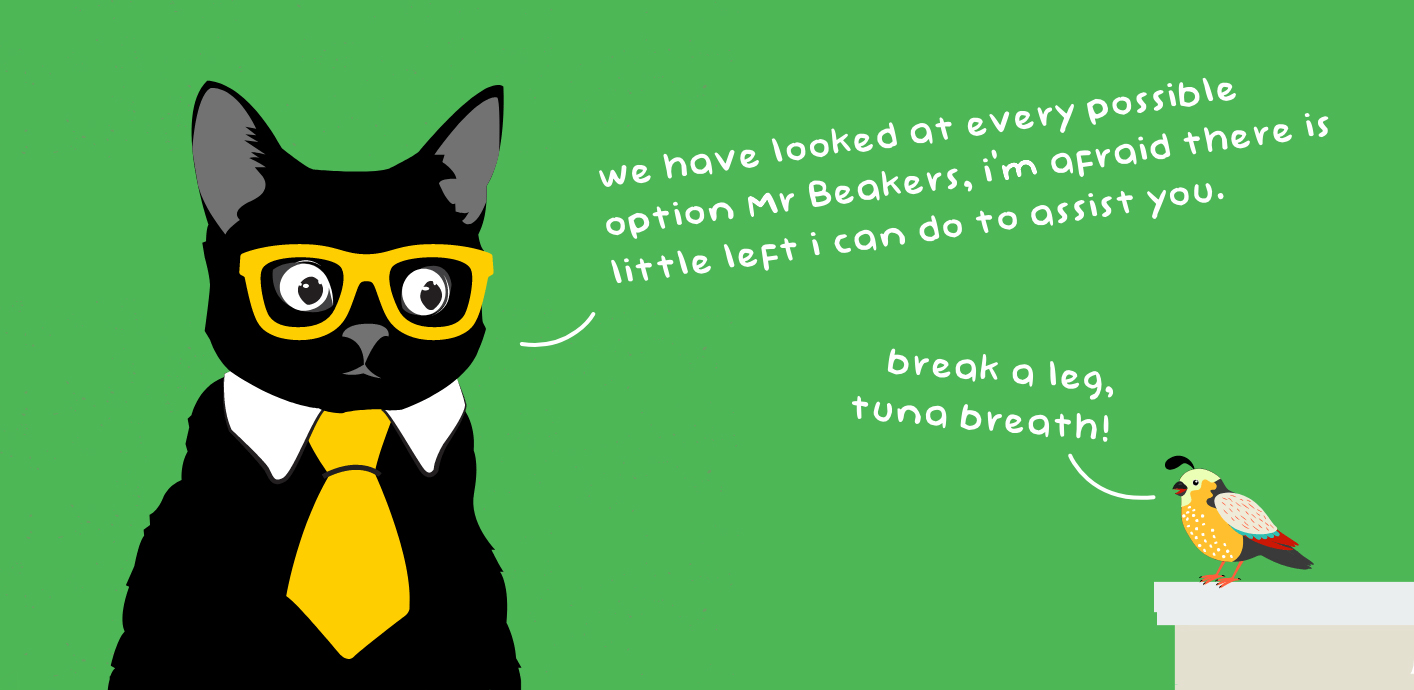Empathy is the cat’s cream for Customer Support agents. It’s ideal if agents have an innate sense of empathy to fall back on during their work. Someone who can communicate their understanding of how the person on the other side of the conversation feels will build long-lasting relationships.
Not only does it keep customers coming back: it builds trust in your overall brand.
You’re likely already paying attention to the presence of this skill during your interviewing process. Hiring folks who are already good at communicating feelings is a smart move. But don’t make a mistake in thinking that you can’t teach someone empathy; with the right leadership skills, education on this particular subject becomes a breeze.
You want to build and grow an ameowzing team with their empathic skills polished to a shine – so how do you train them?
I’ll share some strategies you can take to your team in this article. After reading everything, you’ll better understand what empathy looks like in an interaction.
That’s not it: empathy mistakes to avoid
Have you ever had a conversation with a support representative that felt sickly sweet? The kind that makes your teeth hurt in how they’re trying to be pleasing. It’s great if the agent gets the job done, but does it feel like an honest, personal interaction?
I’m willing to bet that the answer to that question is ‘no’.
Our customers are humans, like our neighbors, fellow parents, colleagues, and friends. They want to communicate on their level, not solely based on your style guide. The best support teams know how to create an individual experience for each person they speak to.
If you have worked in Customer Support for more than two minutes, you will have heard the saying: the customer is king! I agree with that notion, but some agents attempt to prove this by overcompensating.
I asked my network for examples of this overly positive kind of interaction, and here’s what they came up with:
“Oh no! It was broken? I’m beyond honored to take care of you today.”
“You are such a lucky person because I can get you a new dryer in only three days! Other people have had to wait weeks, but you’re so wonderful and special to me that I can get you a new dryer in 3 days!”
When the tone of your replies, even when it’s positive, doesn’t match your customer, the experience becomes awkward. So while your agents can show empathy by hitting the emotional note, it doesn’t transfer when there is a disconnect between them and their customer.
Read on: 9 Proven Tips on How Customer Service Agents Can Demonstrate Empathy

The reverse is also true. It does not make sense for the support representative to be angrier at a situation than their customer. Your support agent should match the customer’s energy without being swallowed by it.
The key things to avoid when communicating empathy are:
- Using overly dramatic words, like “such”, “so”, and “beyond”.
- Displaying a higher emotional response than the customer. Mirroring is a better approach.
- Flirting with a customer is never appropriate, not even when trying to be empathic!
When reviewing your team member’s ability to communicate empathically, you can look for these specific elements. I also highly recommend checking your tone guide based on these take-aways.
Peak-End is where it’s at!
The Peak-End rule is one of my favorite ways to give support agents a broader perspective on quality. Peak-End suggests that we remember the most intense parts of an event, as well as the end of it, the easiest, regardless of it being positive or negative:
- We remember how people make us feel much better than the actual event.
- The end of an event is as important as the peak emotional part.
- It takes less mental energy to store only a few moments into our long-term memory, so our brains economize on highly emotional fragments.
You can have a support interaction that resolves your problem while still feeling like it was a negative experience. In that case, the agent was likely unfriendly, short in their replies, and not very empathetic to what you are going through. Or they failed to close off the conversation correctly. The Peak-End rule tells us that the agent made you feel bad during the interaction and could not resolve that feeling by the end of your conversation with them.
The reverse is also true: you can leave a support conversation without getting what you want, feeling good about the interaction. Say you are looking for a refund, but you are not eligible for one.
What works is an agent who tells you they understand why you want a refund and offers alternatives. Perhaps they suggest replacing the product with one that fits your needs better, or they offer you a coupon for a future purchase.
What doesn’t work is someone who sends you a pre-defined rejection, lacking a personal touch such as asking why you wanted a refund in the first place.
When we address emotion first and the problem second, we tell our customers: “I care about you as a human. I will pay attention to you first before I take care of the business part of our interaction.”

How to train for empathy
When looking for the appropriate approach to train your team to become more empathic, you need to be able to:
- Pinpoint when empathy occurs
- Track your training results over time
- Adjust your workflow based on your results
There are several ways you can approach all three of these points. Let’s go over some of the strategies you can implement.
Review for empathy often
When you have frequent check-in moments with your team, it becomes easier for them to uphold and work on how they show empathy in their work. Your QA scorecard should contain a dedicated section for it, or you should consider having a separate scorecard specifically for empathy scoring.
Don’t get too bogged down with how many rating categories your scorecard needs. To better understand your scorecard’s complexity, read: “Customer Service Scorecard Rating Categories: General or Granular?”
I recommend doing an empathy review of two or three interactions per agent every two weeks. You can increase or decrease that timeframe based on how well they are doing, but I would recommend against leaving more than a month in between.
Empathy comes from tone, mirroring, and the agent’s understanding of the customer’s emotional state
When building your scorecard, these elements should have your focus. They will lead to a better understanding of where you can best train your team. You can try reflective listening exercises if they can’t seem to get mirroring down. You can also play ‘What Emotion Is It’ games if recognizing feelings in others is challenging. Using the wheel of emotions is an excellent resource for that particular exercise; it will help your team identify deeper feelings below anger or frustration.
Empathy boils down to addressing the emotion first and the problem second
This is true regardless of what field your business is in.
Your team must be able to recognize emotion and respond to it in the first place, and only then should they move on to resolving the problem.
When you can spot and redirect an agent jumping straight into problem-solving, that becomes a superpower that will change how your customers perceive your agents.
Again, addressing the emotion first humanizes your customers’ interaction with your team. And when customers are treated like humans, they are more likely to sing your praises and remain loyal.
Calibration exercises are another valuable way to create an understanding of empathy among your team. I love doing these exercises because it gets agents thinking about:
- What the company workflow expects of them
- How their colleagues view empathy
- How to structurally change how they work. Since they are not under scrutiny during the exercise, they can more readily process potential mistakes.
Doing these calibration exercises will let your team work more cohesively. With all noses pointed in the same direction, your customers will have a more consistent experience. Consistency builds trust, and trust builds relationships.
Aim for a calibration exercise bi-weekly until your team can consistently score interactions the same way.

The secret: treat them like c̶a̶t̶s̶ humans
Coaching your team on how to do empathy better comes down to helping them see customers as humans. Allowing them to see beyond the problem and educating them on first addressing the emotional part of the interaction.
When your team puts humanity first, you will notice your customers responding very differently. More empathy means more profitable relationships and more voices to sing your company’s praise.
More coaching features:
Something’s Gotta Quiz – a New Feature to Train & Coach Your Support Team
Build a Team of Champions with Even Better Coaching Sessions


